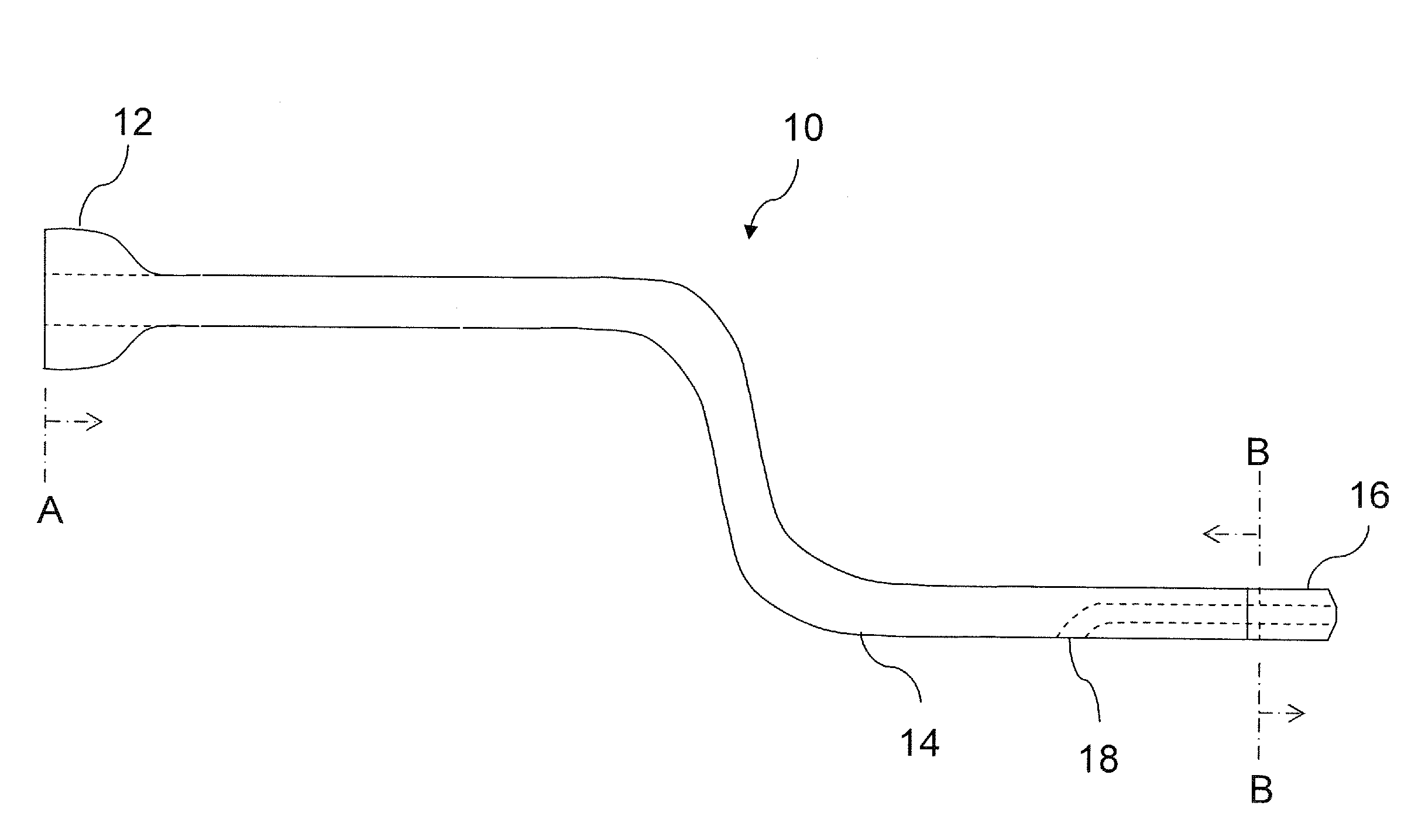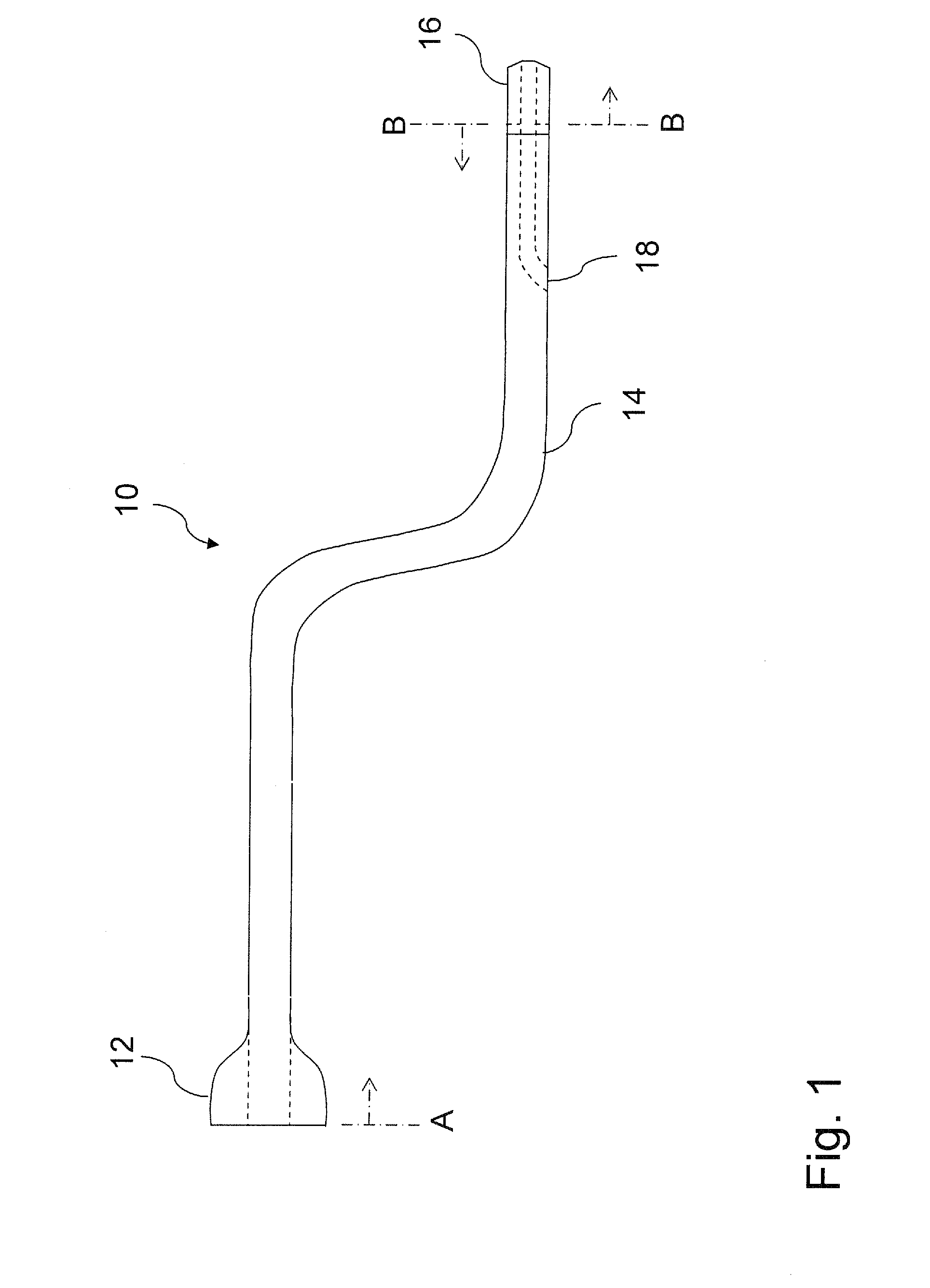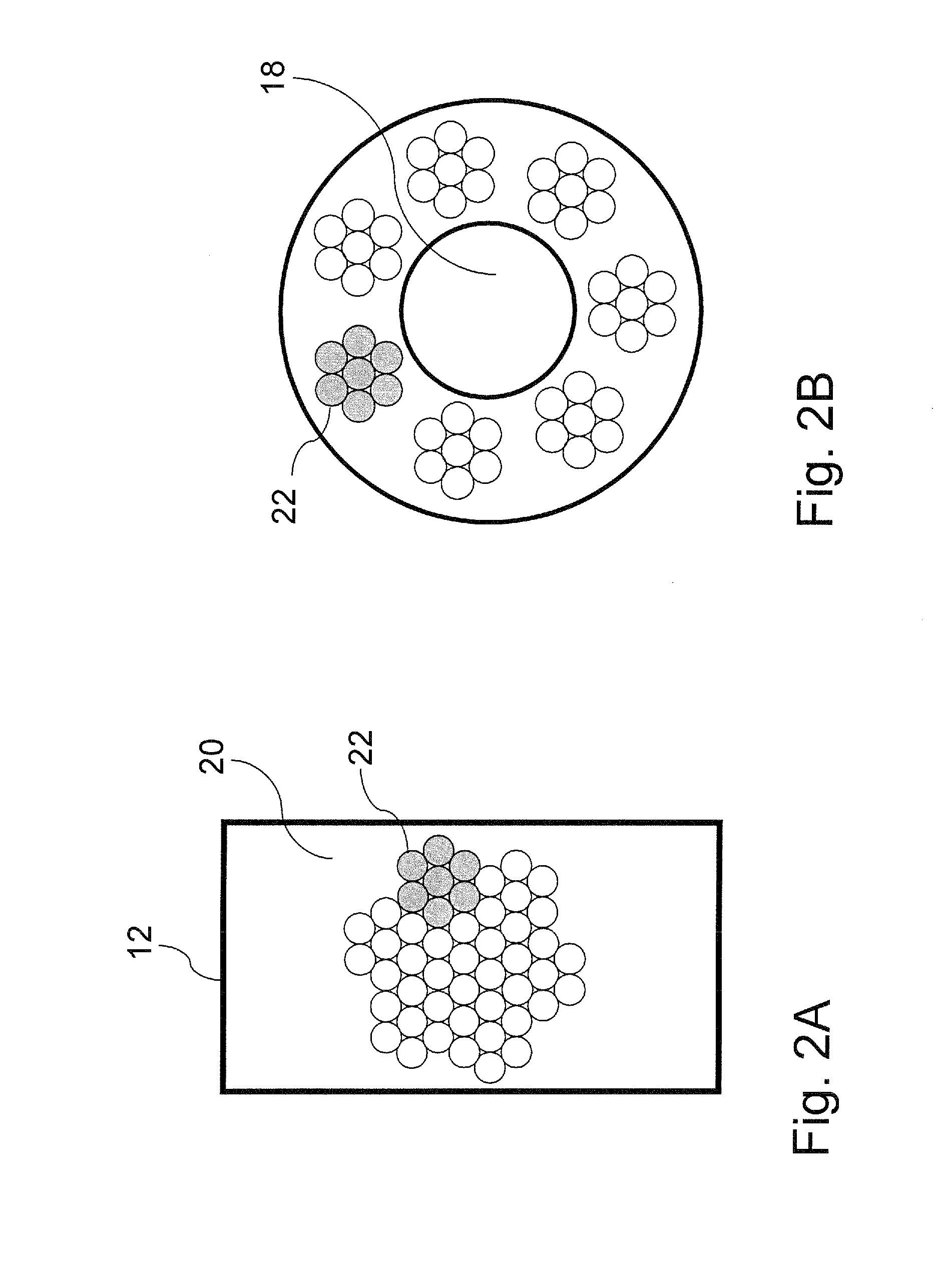Devices and Methods for Ultrasonic Imaging and Ablation
a technology of ultrasonic imaging and ablation, applied in the field of medical catheters and guidewires, can solve the problems of cto, inability to advance the guidewire, and halting the development of the device,
- Summary
- Abstract
- Description
- Claims
- Application Information
AI Technical Summary
Benefits of technology
Problems solved by technology
Method used
Image
Examples
Embodiment Construction
[0041]Several embodiments of the invention will now be described. Various structures, arrangements, relationships and functions may be asserted as being associated with or necessary to certain of the several embodiments. Those skilled in the pertinent art should understand, however, that those structures, arrangements, relationships and functions need not be associated with or necessary to the invention in general.
[0042]Referring initially to FIG. 1, illustrated is a schematic view illustrating one embodiment of a catheter 10 constructed according to the principles of the invention. The catheter 10 includes an elongated main body 14, a connector 12 at a proximal end thereof and a cap 16 affixed to the main body 14 at a distal end thereof. A guidewire lumen 18 is associated with the catheter 10. A plurality of optical fibers is embedded inside the catheter main body 14. The optical fibers extend from section A to section B in FIG. 1.
[0043]FIGS. 2A and 2B together show one embodiment ...
PUM
 Login to View More
Login to View More Abstract
Description
Claims
Application Information
 Login to View More
Login to View More - R&D
- Intellectual Property
- Life Sciences
- Materials
- Tech Scout
- Unparalleled Data Quality
- Higher Quality Content
- 60% Fewer Hallucinations
Browse by: Latest US Patents, China's latest patents, Technical Efficacy Thesaurus, Application Domain, Technology Topic, Popular Technical Reports.
© 2025 PatSnap. All rights reserved.Legal|Privacy policy|Modern Slavery Act Transparency Statement|Sitemap|About US| Contact US: help@patsnap.com



